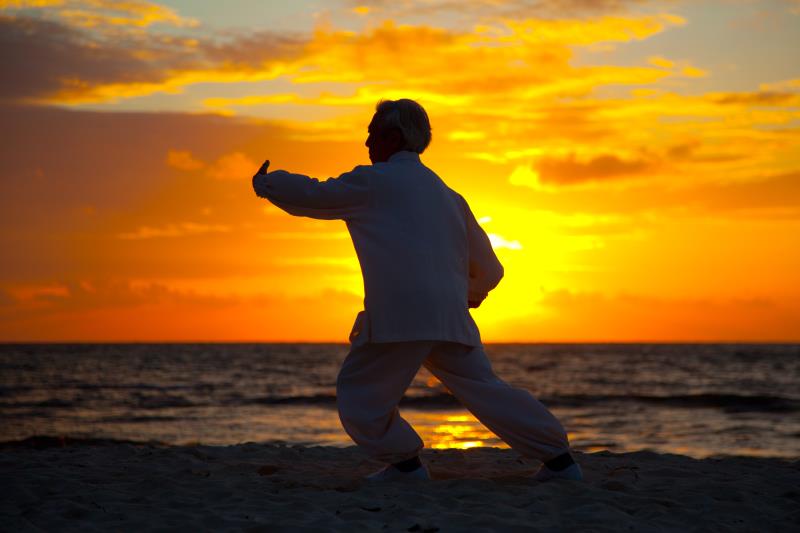Tai Chi improves psychological welfare of older adults with CVD





Practicing Tai Chi proved effective in enhancing the psychological well-being of older adults (≥60 years) with cardiovascular disease (CVD), consequently improving their quality of life (QoL), a meta-analysis has shown.
Psychological distress is prevalent among adults with CVD. [Circulation 2019;139:e56-e528; Am J Prev Med 2017;53:791-798] Despite the pharmacological and behavioural interventions available, adults with CVD continue to experience undesirable psychological symptoms (ie, increased stress, anxiety, and depression), leading to poor QoL. [Clin Res Cardiol 2019;108:1175-1196; Cochrane Database Syst Rev 2008;CD003437; Cochrane Database Syst Rev 2017;5:CD008860]
Mind-body interventions such as Tai Chi is a promising, relatively low cost, non-pharmacological approach that is easily accessible for holistic CVD management. [J Am Coll Cardiol 2018;72:1382-1396; BMJ 2019;365:l2191] However, its benefits remain inconclusive, noted the researchers.
“Tai Chi is generally considered a safe, low-impact, moderate-intensity exercise, making it a feasible option for individuals with CVD, including those with low exercise tolerance … [W]e observed distinctive benefits from Tai Chi practice,” they said.
“However, the improvements were different according to CVD diagnosis,” they pointed out. “[We found that] Tai Chi participants with coronary heart disease had better mental health QoL. [C]hronic heart failure participants had less depression and psychological distress, while those with hypertension had better physical health QoL compared with controls,” they said.
A total of 15 studies were included in the meta-analysis (n=1,853; mean age 66 years, 44 percent female), more than half of which were conducted in Asia (53 percent). The Yang style was the most commonly employed Tai Chi protocol (60 percent). Average Tai Chi sessions were 36. Usual care was the most common control intervention, followed by certain exercises or education. [Eur J Cardiovasc Nurs 2020;doi:10.1177/1474515120926068]
Overall, there was a significantly large effect for better general QoL with Tai Chi vs control (p=0.02).
In terms of mental health QoL, there was a small significant effect overall with Tai Chi vs control (p=0.01). Stratifying by type of CVD led to a moderately significant effect among those with coronary heart disease in favour of Tai Chi (p=0.03).
Regarding physical health QoL, a moderately significant effect with Tai Chi vs control was observed overall and among hypertensive participants (p=0.00 for both).
A moderately significant effect for less depression was also observed overall in favour of Tai Chi (p=0.00). A larger effect was seen among individuals with chronic heart failure, who were also found to have less psychological distress (p=0.00 for both).
Owing to several limitations*, the investigators called for further exploration using more rigorous study designs and carefully chosen outcome measures that can ascertain the effects of Tai Chi on the different types of CVD. “[This would] help establish the behavioural, biological, and environmental mechanisms through which psychological factors influence CVD, and to identify [the impact of] Tai Chi … on morbidity and mortality.”
Tai Chi style, dose, postures, and adherence rates should also be probed further, they added.